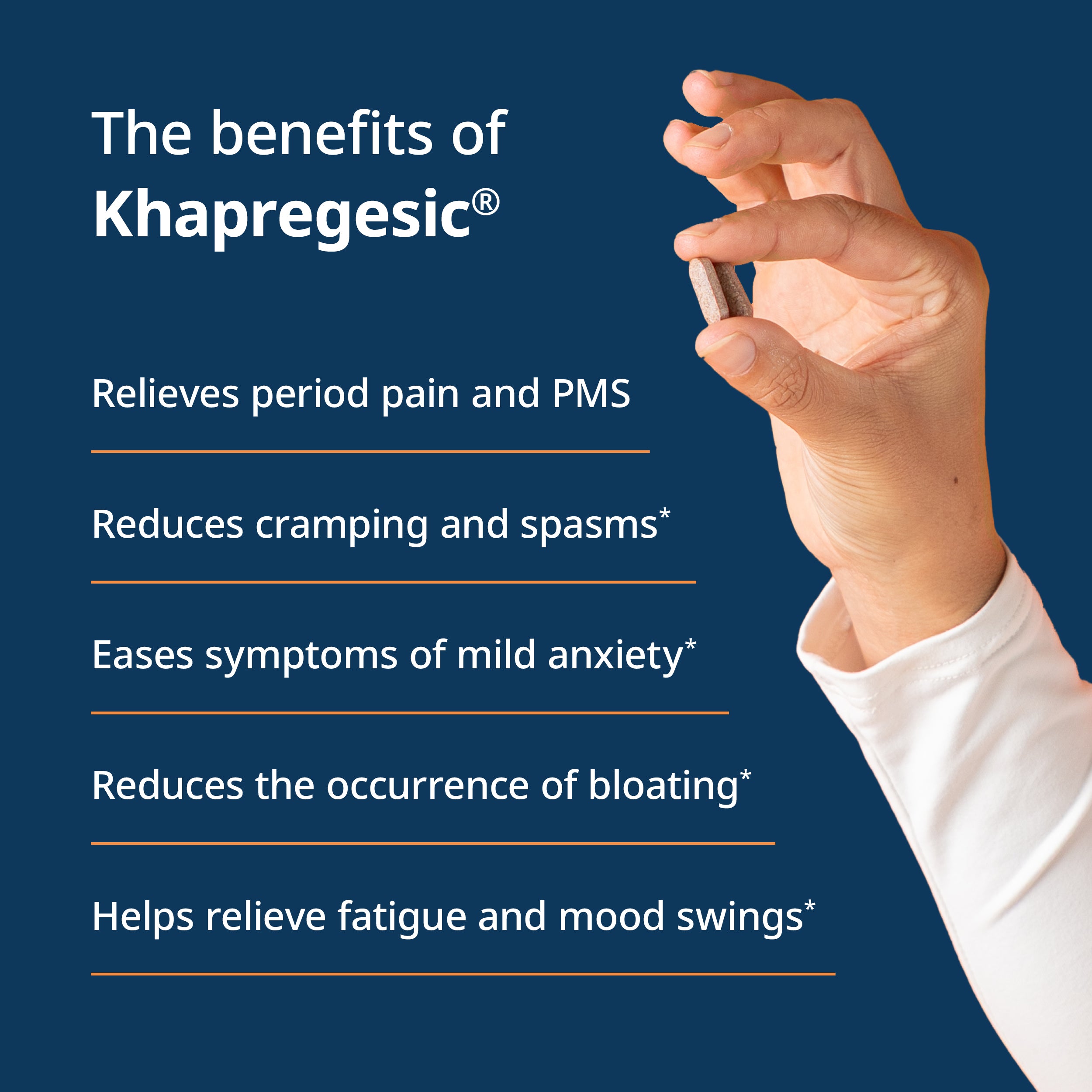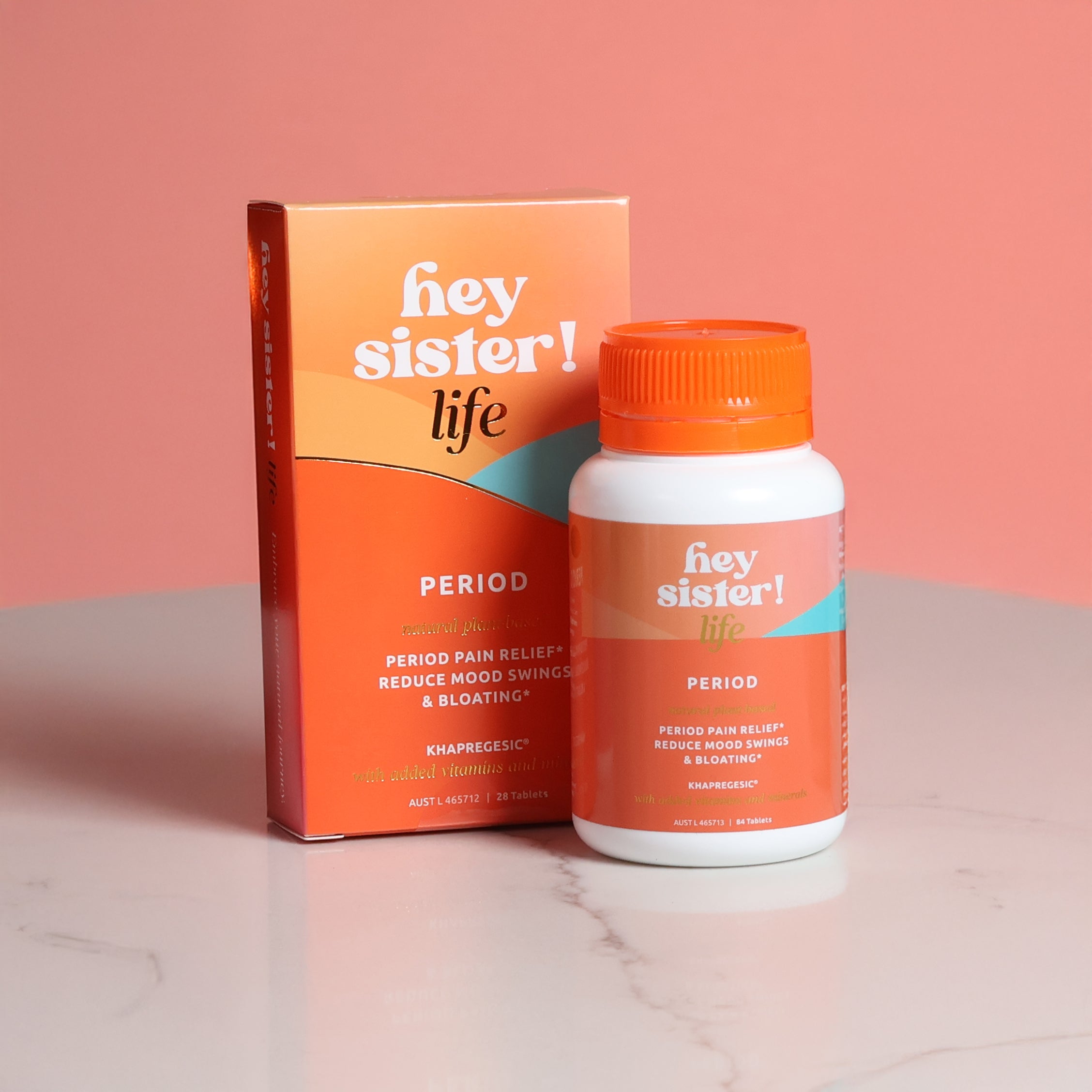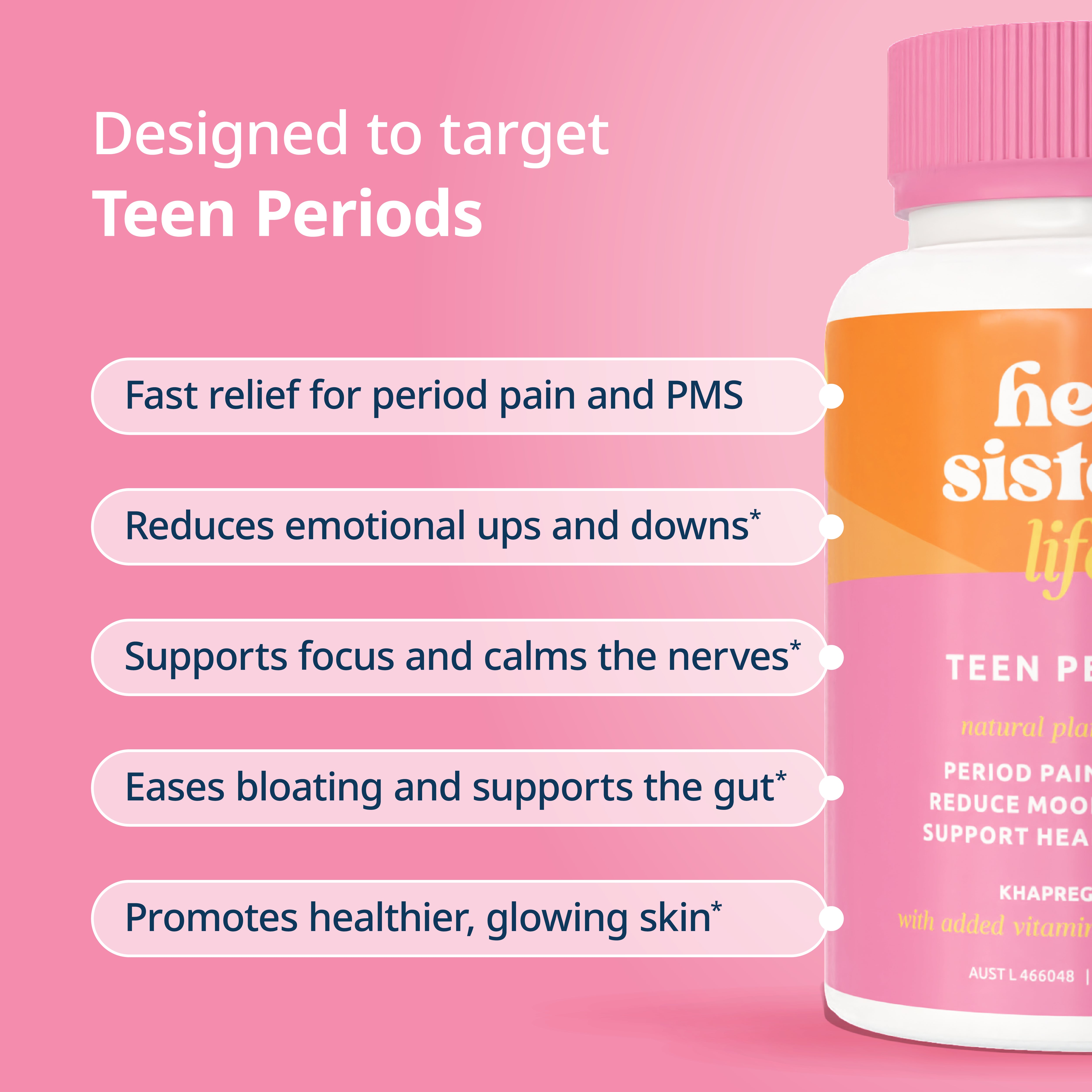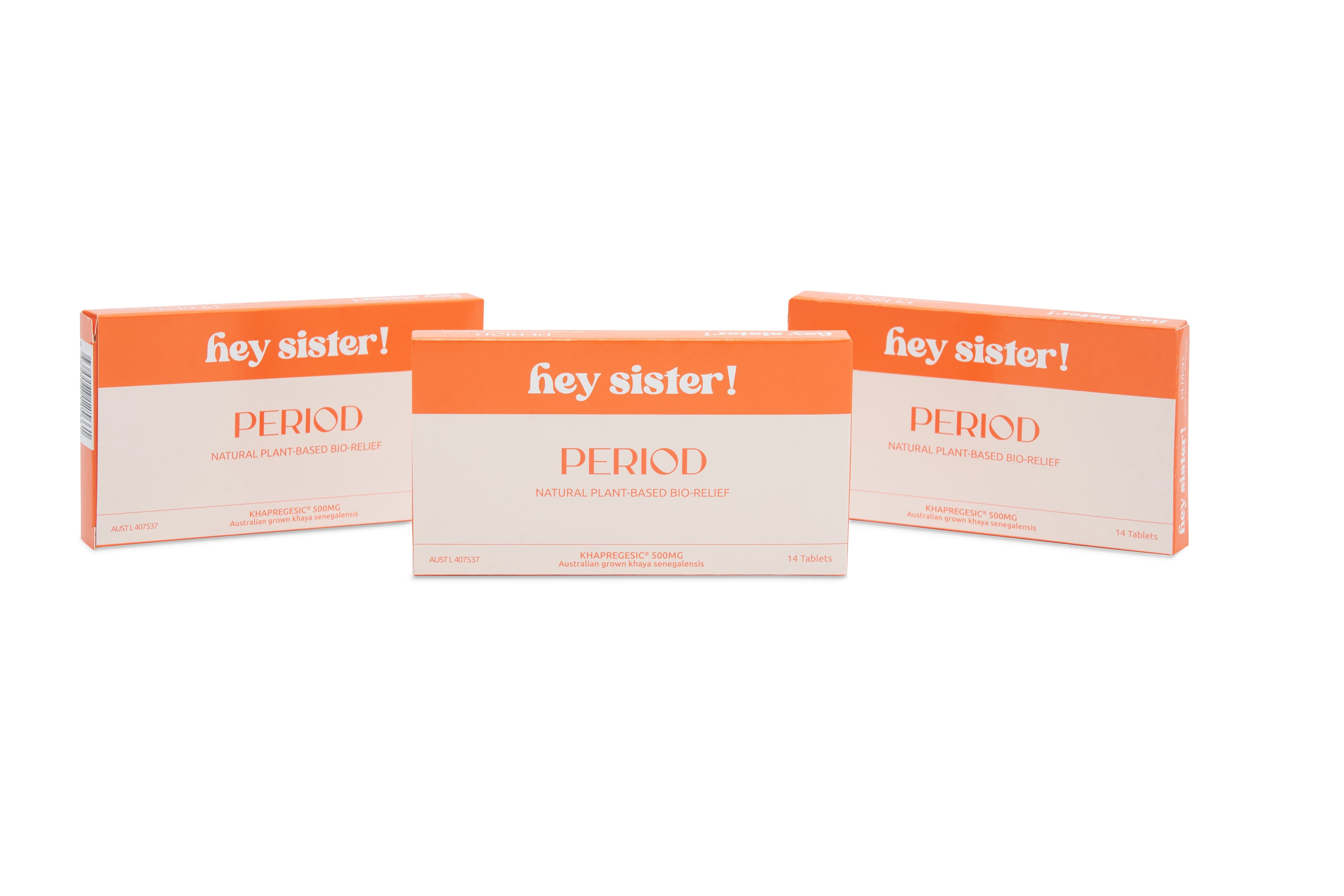Did you know that 1 in 7 Australian women suffer severe period pain at the hands of endo?
The Dynamic Duo: Diet and Periods
The menstrual cycle is no ordinary monthly occurrence—it's a symphony of hormonal shifts and bodily adjustments, orchestrated by the maestros of the endocrine system. Estrogen and progesterone, the leading performers in this grand production, set the tone for this orchestrated dance. However, what often goes unnoticed is the role our dietary choices play in this performance.
Omega-3 fatty acids, the gentle notes in this hormonal symphony, are abundant in fatty fish, flaxseeds, and chia seeds. Their potential to reduce inflammation offers a soothing melody, easing the crescendo of period cramps and discomfort.
Fruits and vegetables, rich in antioxidants, form the vibrant chorus in this menstrual symphony. Their virtuoso performance involves combating oxidative stress and inflammation, offering a respite during the menstrual cycle.
Adequate hydration ensures the tempo of your symphony stays just right. Water, the conductor of this grand performance, helps flush out toxins, keeping the hormonal orchestra in perfect harmony.
Foods with a low glycemic index, such as whole grains and legumes, maintain steady blood sugar levels, preventing hormonal rollercoasters that can worsen cramps.
During your period, iron levels can plummet, leaving you fatigued. Incorporate iron-rich foods like spinach, lentils, and red meat to keep your energy up.
Inflammation: The Uninvited Guest
Now, let’s discuss the uninvited guest that often crashes this symphonic performance—inflammation. When your body detects hormonal shifts during your menstrual cycle, it responds with an inflammatory accompaniment. Unfortunately, this inflammation often exacerbates the intensity of cramps and discomfort, adding an unwelcome twist to your cycle.
An observational study published in Nature concluded that the majority of women suffer moderate to severe cramping during the typical period.
The Inflammatory Foods to Avoid
Certain foods can act as instigators, fueling the fires of inflammation. High-sugar and processed foods, along with excessive caffeine and alcohol, can aggravate inflammation during your cycle.
The Mind-Body Connection: Stress and Inflammation
Stress, a common intruder in our fast-paced lives, can also fuel inflammation. Incorporate relaxation techniques like yoga, meditation, or deep breathing to keep stress at bay and inflammation in check.
The Enigma: Endometriosis
Welcome to the heart of the mystery—endometriosis—a condition that has remained misunderstood and underdiagnosed for far too long. Picture the cells lining your uterus (endometrium) deciding to embark on a journey, exploring new territories within your body. At times, they set up camp in areas like the fallopian tubes, ovaries, or even the bowels. These rogue cells form painful lesions, akin to a riddle within the intricate novel of a woman’s health.
A recent research article discusses whether your severe period pain could indeed be endometriosis?
The Formation of Endometriosis: A Plot Unveiled
Endometriosis is like a captivating mystery novel—the plot twists and turns unexpectedly. During your menstrual cycle, these displaced endometrial cells respond to hormonal cues, mimicking those within your uterus. They grow, break down, and bleed, just like their counterparts. However, unlike the cells in your uterus that can exit the body through menstruation, these cells have nowhere to go. This leads to inflammation, scarring, and the formation of painful adhesions or lesions.
The Role of Genetics
Research suggests that genetics may play a significant role in predisposing some women to endometriosis. If your mother or sister has had endometriosis, your chances of developing it might be higher.
The Immune System’s Mystery
The immune system's response may also contribute to the enigma. In some women, the immune system fails to recognize and eliminate the endometrial cells outside the uterus, allowing the disorder to progress.
Discovering the Intruder: Where Can Endometriosis Be Found?
Endometriosis, the uninvited guest in this tale, can be discovered in various areas beyond the uterus. Here are the common locations where these misplaced cells make their presence felt:
- Ovaries: The ovaries often become home to endometrial cysts, known as endometriomas.
- Fallopian Tubes: Endometrial tissue can cause blockages and inflammation in the fallopian tubes.
- Bowel: When endometrial tissue attaches to the bowel, it can lead to gastrointestinal symptoms and pain.
- Pelvic Peritoneum: The thin tissue lining the pelvis can host endometrial implants, causing pain and inflammation.
The Quest for Relief: Treatment Options for Endometriosis
When endometriosis makes its presence known, a proactive approach to managing and alleviating its effects becomes crucial. Here are some treatment options:
- Pain Management: Over-the-counter pain relievers can offer temporary relief from cramps and pain.
- Period Pain Medicines: Common medicines like ibuprofen or acetaminophen can provide effective period pain relief.
- Hormonal Therapy: Birth control pills, hormone therapy, or GnRH agonists can help regulate hormones and manage symptoms.
- Surgery: Laparoscopic surgery can remove endometrial tissue and adhesions, providing long-term relief in some cases.
- Fertility Treatments: For those struggling with infertility due to endometriosis, in vitro fertilization (IVF) might be an option.
Taming the Storm: Easing Severe Period Pain and Endometriosis
For those grappling with severe period pain, and particularly for those facing the relentless storm of endometriosis, there's hope and innovation at hand:
- Comprehensive Pain Management: A multi-pronged approach involving pain medication, dietary adjustments, and stress reduction techniques can provide significant relief.
- Natural Period Pain Remedies: Consider using natural remedies like hot water bottles, herbal teas, or aromatherapy for soothing relief.
- Physical Therapy: Pelvic floor physical therapy can ease muscle tension and discomfort associated with endometriosis.
- Alternative Therapies: Acupuncture, yoga, and meditation have shown promise in managing pain and enhancing overall well-being.
- Remedies for Cramps: Explore various remedies such as heat therapy, gentle exercises, and specific stretches to alleviate cramps.
- Lifestyle Changes: Regular exercise, a balanced diet, and managing stress levels can positively impact both severe period pain and endometriosis.
In this whirlwind exploration of diet, periods, and the enigmatic endometriosis, we've witnessed the power of knowledge and innovation in shaping our experience. Embrace your cycle, listen to your body's cues, and advocate for your health. Together, let's challenge the norms, break the silence, and create a harmonious symphony of health and happiness. The stage is set, and you're the lead performer in this extraordinary production! 🌟










